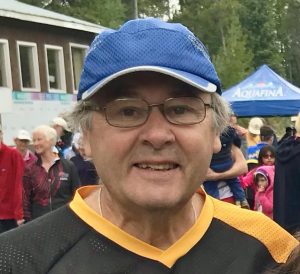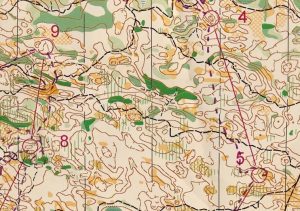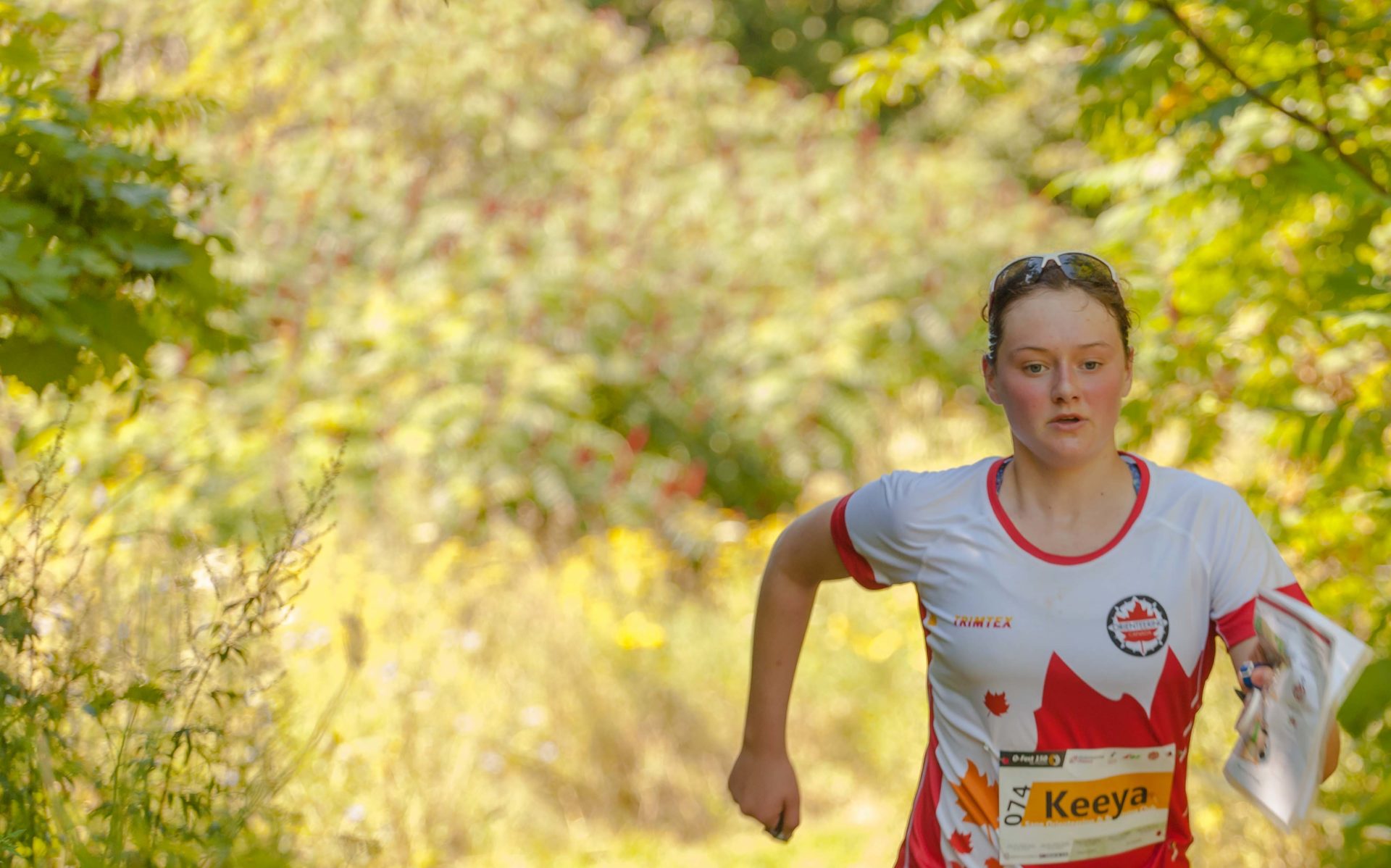
Jim Webster has been a stalwart of orienteering in western Canada for decades, as a keen competitor, event organizer and, particularly, as a recruiter of both new participants and event volunteers. If anyone warrants the description of “eminence grise” (defined in Wikipedia as “a powerful decision-maker or adviser who operates “behind the scenes”, or in a non-public or unofficial capacity”) in orienteering, it would be Jim. He now resides in the Kootenays, where he helps guide the KOC as they continue to take on major events that would unquestionably stretch any club. You may not necessarily see Jim ‘manning a booth’ at one of these big KOC events, but his experience and energy constantly inform and inspire the organization.
DW: How did you first get started in orienteering?
Jim: I first became aware of orienteering in 1976 or 1977 when a friend, Ed Lowan, invited me to a weekend clinic that was being hosted by the Calgary Board of Education. Lyndon Nordeen and Nestor Kelba had attended a national workshop at Guelph, hosted by Sass Peepre to spread the word about orienteering. They returned to Calgary and decided to organize a workshop for teachers, along with Juri Peepre. Although I wasn’t a teacher, Ed thought I might enjoy it. I arrived in dress shoes and long pants and soon found myself running through the woods of Edworthy Park. I finished first that day, amongst a group of novices, but for me it was finally a sport that I felt a connection with. Ed and I quickly became involved in the new orienteering scene in Calgary, and were soon hosting and organizing events ourselves.
DW: Who was the most influential person in your competitive career?
Jim: Competitively, it may have been Don Bayley or Ed Lowan of FWOC, and then Geraint Edmunds. These were the guys I was always trying to keep up with, and on occasion, beat. I even beat Gord Hunter once so that, for me, was a stellar day.
DW: What is your most memorable O race (good or bad)?
Jim: Good: having a perfect run in Manitoba in a lead-up event to the 1988 Canadian Championships. Bad: Peggy’s Cove (Indian Harbour) for the Atlantic Championships. I was just pleased to have survived the bushes and rocks!
DW: How many pairs of O shoes do you own?
Jim: One

DW: What is your favourite O map?
Jim: Dalmuir, east of Edmonton. I love the subtle terrain. Not many hills and compass work can be a real bonus to a good run.
DW: Do you prefer to use a thumb compass or a baseplate compass?
Jim: Base plate. I started with a base plate and never felt totally comfortable switching.
DW: What do you consider your greatest strength as an orienteer?
Jim: Running on a bearing for a long distance through featureless terrain.
DW: Why do you most often make mistakes?
Jim: I make more mistakes now that I don’t compete as often and have slowed down. I had a ten-year stretch where I’d make very few mistakes but I do make some now. Still, I’m happy with most of my runs.
DW: How many parts of the world have you orienteered in, and where would you most like to go?
Jim: Sweden, USA, Denmark, Switzerland, Barbados, all parts of Canada.
DW: What is your favourite O discipline?
Jim: I really enjoyed relays.
DW: In what part of the sport do you most like to volunteer?
Jim: Event Director
DW: If you could, what aspect of the sport would you change?
Jim: I’d like to see more 2-day or multi-day total time events.
 Orienteering BC
Orienteering BC